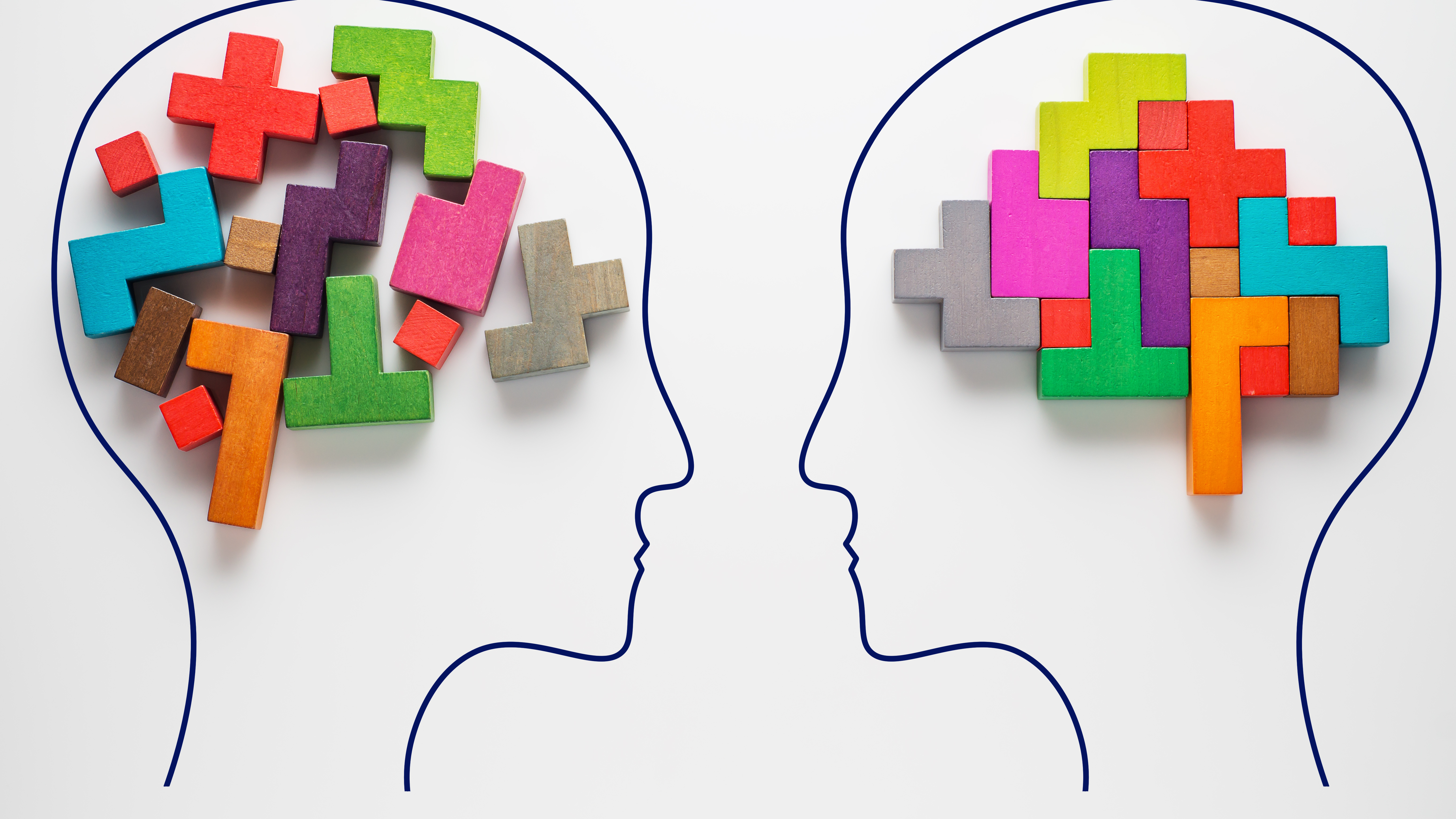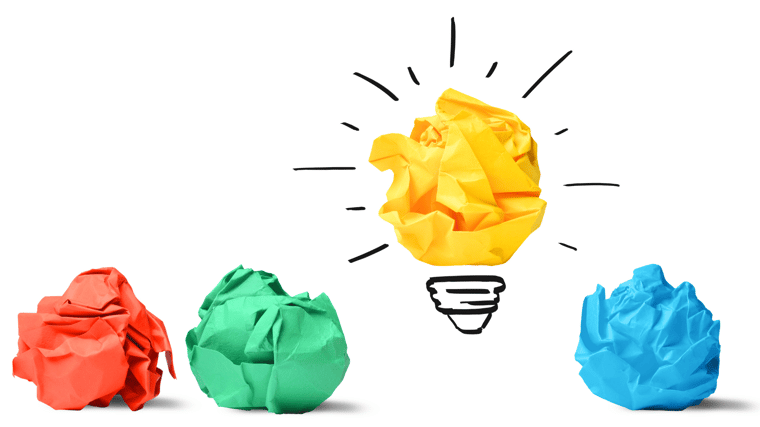Design thinking is one of several ways to approach problem-solving and innovation. It’s “the single biggest competitive advantage that you can have if your customers are loyal to you - because if you solve for their needs first, you’ll always win,” states Jennifer Kilian, a McKinsey & Company partner.
What is design thinking?
Design thinking involves focusing on the consumer rather than the problem at hand. This problem-solving method allows teams to generate new ideas and transform them into solutions.
When focusing strictly on the user, questions arise such as who will be using this service or product and how will they respond to this new approach? Teams apply experimentation and empathy to arrive at innovative strategies. Decision-making is based on drawing conclusions and evidence of future users' desires instead of history or gut feelings.
The benefits of design thinking in organizations
Ever wonder why Heinz ketchup makes an upside-down bottle? It simply solved a significant pain point for all ketchup lovers! No longer did anyone have to wait for ketchup to land on their food. Customers were so thrilled with this concept that other condiments now use the same package design. Inventor Paul Brown takes credit for the bottle design, but Heinz used the process of design thinking to market the upside-down ketchup bottle. Recall the catchy Heinz ketchup tv commercial with Carly Simon’s song, “Anticipation” and the tagline “No wait. No mess. No anticipation.”
Design thinking feeds on the premise to learn to be curious - make things happen. It’s the belief that curiosity is revolutionary! When teams have this mindset, great things transpire, such as:
- A culture of innovation and creativity
- Employee engagement and collaboration
- Enhanced employee capabilities
How do these invaluable benefits come to life? The structure of the process demands keen problem-solving, creativity, collaboration, and agreement on solutions to move to the next step in every stage of design thinking.
Implementing design thinking in organizations
How do you build a design-thinking mindset in your organization? Several techniques are commonly used after the team has a list of well-thought-out ideas:
- Ideation methods such as brainstorming, mind mapping, and SCAMPER are tried and true processes. Not only do teams need to understand what users want but also why they want it and the impacts if their need is met vs unmet. One way to do this is through team brainstorming by venting any underlying assumption for each idea. Another approach is SCAMPER, which takes brainstorming to a more creative and in-depth level. The goal is not to come up with a brand-new solution but to improve an existing product, service, process, or idea.
- Design sprints are a time-bound approach to rapid prototyping. Teams can solve problems through designing, building, and testing ideas with users. This allows teams to quickly gather feedback, agree, and define goals and deliverables.
- Visualization tools like journey maps, personas, and storyboards help understand the end user's needs, pain points, and motivations. These tools also mitigate unconscious biases by providing shared perspectives that assist in uncovering hidden assumptions and diverse viewpoints. Visualization tools support inclusive collaboration. By diving into the customer experience, the team gathers data and forms a timeline to understand when the journey starts and ends. After the journey mapping process, the findings are revealed and can include photos and quotes from customers.
Key team members will then share their intel and observations. In turn, they’ll combine data into themes for shared insights from the team. This process allows for a constructive review of each other’s takeaways and reduces biases. Storyboards are then shown to a small sampling of users for them to visualize the team’s innovative ideas.
How does management create cross-functional teams and collaboration to facilitate design thinking? By implementing an array of strategies, leaders can create a culture that supports diverse teams and impactful collaboration, making design thinking a daily practice within the organization. Here’s a sampling of strategies:
- Identify stakeholders from different departments and across all levels of the organization, who can contribute unique perspectives to the problem-solving process. These stakeholders should be selected based on their expertise, knowledge, and experience related to the initiative.
- Foster a culture of collaboration by valuing teamwork and open communication. Leaders should encourage all employees to share ideas and insights freely, regardless of their department or role.
How do teams align design thinking with organizational goals? The goal of the team’s design efforts is to contribute effectively to the organization’s success and growth. Here are some key strategies and steps to achieve this alignment:
- Thoroughly understand the organization's mission, vision, and strategic objectives, including short- and long-term goals, target markets, competitive landscape, and the overall business strategy.
- Clearly define the initiative’s objectives and goals to ensure the team has a shared understanding of what needs to be accomplished, correctly aligns with their efforts, and establishes roles and responsibilities.
- Measure and track success by setting relevant metrics and KPIs. This will measure the impact of design-led initiatives on organizational goals. Regularly track progress and make data-driven adjustments to optimize the alignment over time.
Why embrace a fail-fast, learn-fast approach? This approach promotes a culture of continuous learning and improvement, where the emphasis is on finding what works best through a process of rapid experimentation and feedback. Here are a few examples of why this is so great for design thinking:
- Experimentation and learning occur by failing fast. Teams can quickly discover what doesn't work, which is valuable information to retain for future initiatives. This process of trial and error fosters learning and innovation.
- Resilience and adaptability build as teams embrace failure. This helps them not to be afraid to fail but to see it as a natural part of the creative process.
Cultivating a design-thinking culture
Incorporating design thinking into the organization's culture facilitates innovation and collaboration. Teams are then able to better align their design efforts with organizational goals and successful results. How do organizations cultivate this?
- Leadership support and role modeling are key to the ultimate success of design thinking. People leaders are the best advocates to not only implement the process but put it into practice daily and share results. Executive leaders should also support the design thinking processes by being transparent about the company’s mission and goals and overall business initiatives for each quarter.
- Training and upskilling employees in design thinking helps build employee buy-in. It’s a learning process, and as Kaaren Hanson, former Facebook design product director, has explained, “Anytime you’re trying to change people’s behavior, you need to start them off with a lot of structure, so they don’t have to think. A lot of what we do is habit, and it’s hard to change those habits, but having very clear guardrails can help us.”
- Integrate design thinking into performance evaluations and incentives as it reinforces the continuation of the program and stresses the importance and faith leadership has in the process.
- Include remote workers through virtual collaboration in the process. Since design thinking is a highly organized process that keeps employees on track, virtual collaboration should not be seen as a challenge.
The importance of design thinking in organizations is immeasurable. Teams must make it a regular practice to continually analyze and meet the ever-changing needs of their users. Otherwise, the business will go to competitors as the consumers’ needs will not be met by your service or product. Soft skills training in communication, innovation, leadership, management, presentation skills, problem-solving, and strategic planning are of utmost importance for the process's success. Problem-solving exercises and practice debates with peers help employees to understand and master the process techniques.
Blue Ocean Brain’s award-winning microlearning solution helps organizations of all sizes and industries train and upskill their people and includes lessons to assist in the design thinking process. For more information, click here to schedule a consultation with one of our learning experts.




